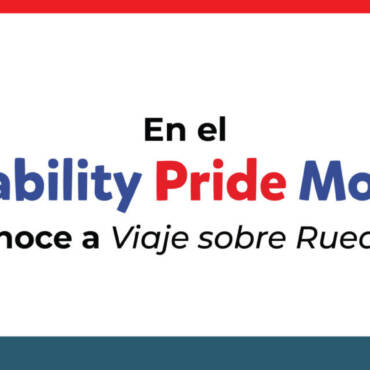By: Yarimar Marrero Rodríguez
More and more parents show concern about the development of their children's speech and language skills in the early stages of development. To clarify many of these concerns, we spoke with Carlos Cardona Dinguí, supervisor of the Speech Therapy area at SER de Puerto Rico, who confirms the diversity of ways in which people can communicate.
YMR: How do you define speech therapy
CCD: It is the discipline that works on communication problems. Understand receptive language, expressive language, articulation and comprehension.
YMR: What is the difference between having a developmental disorder in speech versus in language?
CCD: Normally when we refer to the subject of language, we speak of receptive and expressive language. Receptive language is the ability of the child or adult to understand an instruction. At the level of expressive language, it refers to the ability of that child or adult to communicate in words what they think. There is a diversity of modalities within expressive language, we can have children who speak to you verbally, which is basically the way we all know and communicate, but we also have the one who has profound hearing loss and uses sign language. There is also the case of those who cannot communicate through either of these two channels and seek an alternative method, which is the so-called technological assistance team, which allows them to express what they want. When pathologists refer to speech, it is closely linked to phonology and articulation.
YMR: What strategies do SER speech therapists offer parents to strengthen communication with their children who lag in this area?
CCD: The main basis is that all the relatives and the circle close to that child speak the same language. The literature, when talking about bilingualism says, "you can expose the child to two languages, but before introducing him to another language you must be aware of whether that child has a typical development." When we have a child with a language delay, we are no longer going to expose them to both languages. First we start with one and you choose the language that is in your environment, in your environment and the one you use the most. We reinforce the use of the notebooks because there we paste the material discussed in therapy and we put the instructions on how to work it, so at home dad or mom can follow up. We recommend that the interactive toys they use if they have sounds speak clearly. When watching television, using the cell phone or the tablet, which are aimed at developing language. Do not use technology to "keep them calm" but take advantage of it to stimulate those areas of lag. There are many vocabulary applications and the child plays, learns and interacts.
YMR: As a speech pathologist, what do you think is the reason for the increase in the cases of children who present some deficiency in the area of speech and language?
CCD: Within the development of children after one year is that parents begin to worry because they do not speak, but to be able to give that development of speech there must be some skills before. When one consults the sensory integration scale, which is given to you in stages, in this development the last thing that appears is speech, first there must be motor integration and neurological processing. Many times when one begins to work with a child with a speech and language deficiency, one refers them to other areas because you identify that there was a deficiency in that sensory integration. Language develops within social interaction, which is why there are already studies that affirm that the isolation of the pandemic directly affected children in the areas of speech.
YMR: It is said that love is a universal language and since we are in the month of mothers, whose bond with their children overcomes any obstacle, do you remember any particular case of a participant and their mother that has marked you in a positive way? .
CCD: I remember a lot the case of Xavier Rivera who was taking therapy services and was at our School until he graduated and now as an adult he comes to receive therapy. His diagnosis is cerebral palsy-spastic quadriparesis. Before, for children in Xavier's situation, there weren't many alternatives. Because all four of its extremities are wrapped up and there is no motor control, this also affects speech. To be able to speak there are five motor processes: breathing, phonation, resonance, circulation and prosody. Back then if you didn't respond to a verbal test they sent you to special education, even if you were brilliant. He was one of the first that we trained for the use of technological equipment. This technological equipment works with many templates and if I want to ask you a question, Xavier chooses the stimuli on the equipment, puts it in a sequential order and the equipment responds with voice. That allowed him to graduate from our School with high honors and currently has a master's degree. I remember that his mother Eileen would take therapy with him and he would be taught to master and work with the team. I always say that who determines how far the child will go are the parents who continue to stimulate and develop those skills and in that sense Xavier's parents have been extraordinary.


